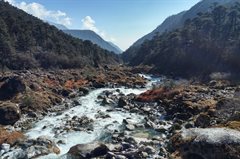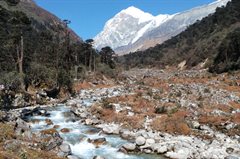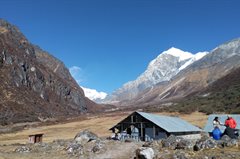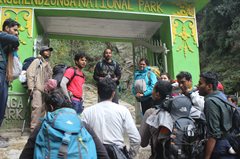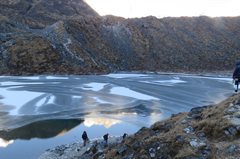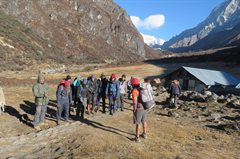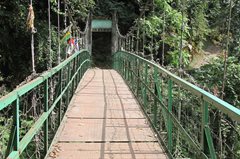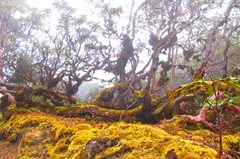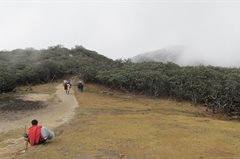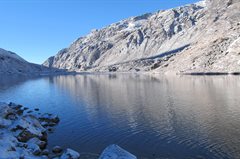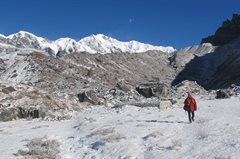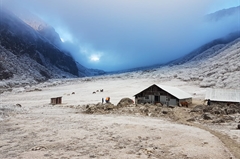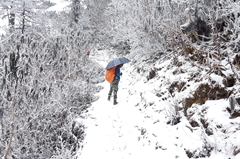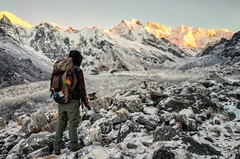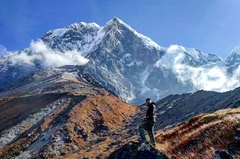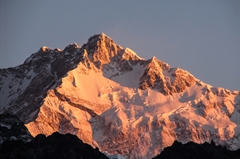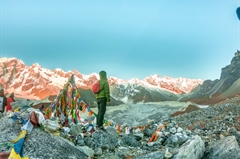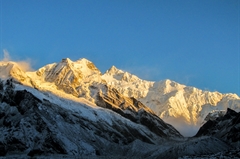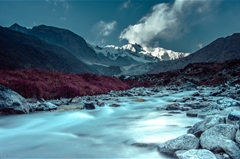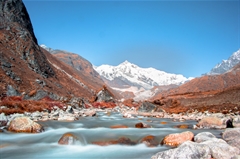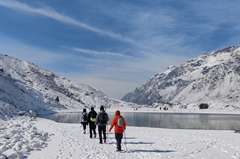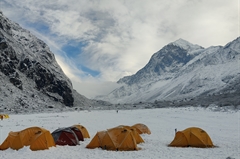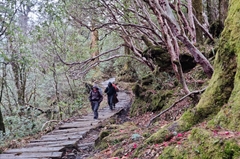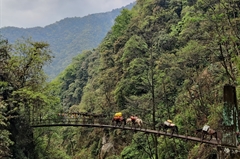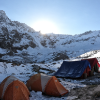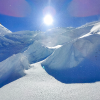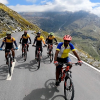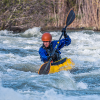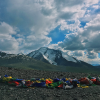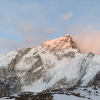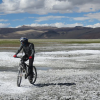Goechala Trek
The closest you can get to Mt. Kanchenjunga without climbing it
Available Batches
Available Batches
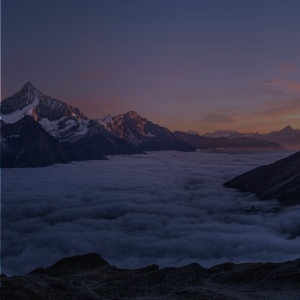


Brief Description
Brief Itinerary
Detailed Itinerary
Day 1
Siliguri to Yuksom (150 km drive)
Time taken: 7-8 hours
If you have opted for the transport arranged by Bikat Adventures, please report at Laddoo Gopal Restaurant located on the Sevoke Road near the 2 Mile Check Post at 10 AM to board your vehicle leaving to Yuksom.
In case, you are traveling on your own to Yuksom, this article could come in handy in planning your route.
Carry two passport size photographs and a copy of identity proof along with an original ID proof for entry purposes. Please note that the rules for foreigners differ. Yuksom is a small village with many attractions of its own. You can plan your travel a day early if you would like some time to explore the place.
Day 2
Yuksom (1,720 M) to Sachen (2, 195 M)
Trekking duration: 5-5.5 hours
The Goechala trek starts from Yuksom (behind the forest check post). Initially, the trail skirts around the fields of Yuksom before entering the magnificent river valley of Rathong. The trail majorly runs through dense jungles with occasional exposure to sunlight here and there.
We will be crossing three long suspension bridges including the one that runs across the famous Tshushay Khola waterfalls. It is a moderate walk up to the second bridge after which the trail ascends steeply to Sachen.
Sachen, the campsite for the day, is a small clearing in the forest marked by a wooden shelter and a forest hut. The Prek River runs farther down in the valley below. Although it is not visible from the campsite, the faint gushing of the river can be heard from the campsite when you listen closely enough.
Day 3
Sachen (2, 638 M) to Tshoka (2, 900 M)
Trekking duration: 5-5.5 hours
The trek to Tshoka involves a moderate ascent peppered by a couple of steep sections. It begins with a crossing over a bridge that runs across the Prek River. After crossing the bridge, the trail runs in to the thick of the forests once again. The forests are filled with oak and rhododendron blooms during spring season. In autumn, the leaves take on lovely hues of fall colours.
To find out the best season to do the Goechala Trek, click here.
Bakhim, another camping ground with some lovely views, is the mid-point of the trek today. After a generous break at Bakhim, we will resume our ascent to Tshoka. Tshoka houses a serene monastery across a still pond higher up. After resting at the campsite, we will be going on a quick acclimatisation walk to the monastery which holds some remarkable views of the Kanchenjuna range and Mt. Pandim.
Day 4
Tshoka (2,900 M) to Dzongri (3, 970 M)
Trekking duration: 6 – 8 hours
The trek to Dzongri is undeniably one of the most demanding days of the Goechala Trek. We will be going well above the tree line today. What makes this day very challenging is the forced altitude gain of over a 1000 M. So, in order to let your body acclimatise better, ensure you do not rush your pace.
The initial section of the trail is paved with wooden logs while flanked by pretty rhododendron blooms on the left and right. A couple of hours into the trek will bring you to a large, clearing called Phedang. Lined with prayer flags and surrounded by stunning snow clad mountains all around, we will be taking a long break here before resuming trek.
Dzongri, the campsite for the day, is still a good 4-5 hours trek away from Phedang and involves some steep ascents. Ensure you layer yourself suitably after reaching the campsite. The winds are quite fierce here and it can get quite cold in the nights.
Day 5
Dzongri (3, 970 M) to Dzongri Top ( 4,020 M) & back. Rest Day at Dzongri.
Trekking duration: 2- 3 hours
The day begins at 4 AM with an ascent to Dzongri Top (4, 020 M) from where you get unparalleled views of the Singalila and Kanchenjunga ranges during sunrise. It takes about an hour to reach Dzongri top.
What makes this climb spectacular is the alpenglow one gets treated to at the top. On a day with clear weather, the Kanchenjunga and Singalila ranges turn into molten gold under the early morning rays of the sun.
The day is for rest and acclimatization and prepariong for the long days ahead.
Day 6
Dzongri (3, 970 M) to Thansing (3, 704 M)
Trekking duration: 4-5 hours
Since, Thansing is located at a lower altitude when compared to Dzongri, it is going to be an easy hike of 4-5 hours with gentle ascents and descents alongside the Prek River.
The campsite is located right at the foot of Mt. Pandim making it one of the delightful camping experiences of the Geochala Trek.
Day 7
Thansing (3, 704 M) to View Point 1 (4, 602 M) to Thansing (3, 704 M)
Time: 12-13 hours
Day 7 marks the culmination of the Goechala Trek. It is the most challenging day. But we have the advantage of leaving some stuff from our rucksack at the campsite behind.
If we are trekking from Thansing, we will begin our trek at 1 AM. If we are already at Lamuney, we will be beginning the trek at 3 AM.
The early start ensures that you are there at View Point 1 in time to watch the morning rays of the sun paint the Kanchenjunga range golden, a bewitching sight we promise will remain etched in your memory for a long time.
Since we aim to reach View Point One by sunrise, a major portion of your ascent to the summit will happen in the dark. So please ensure you carry your head torch with you.
The view from View Point 1 is breath taking, both literally and metaphorically. This is the day you get to meet Mt. Kanchenjunga face to face and watch its snow clad turn a dazzling gold under the early morning rays of the sun.
This coupled with the accomplishment of finally having reached the summit leaves many overwhelmed and speechless and often makes for THE BEST EXPERIENCE on the Goechala Trek.
Day 8
Thansing (3, 704 M) to Tshoka (2, 900 M)
Trekking duration: 6-7 hours
The descent back to Tshoka can be steep in some places. In December, certain sections of the trail will also be frozen in ice.
Be careful while descending and it is advised to trek slow. In spring, you will find Rhododendron trees lining your way all the way down to Tshoka.
Day 9
Tshoka (2, 900 M) to Yuksom (1, 720 M)
Trekking duration: 6-7 hours
We will be retracing our path back to Ruksom today. Since the trek is mostly downhill, it can get quite strenuous on your knees. Only the last section, right before reaching Yuksom has a couple of ascents.
Overnight stay will be at a hotel in Yuksom.
Day 10
Yuksom to Siliguri
Board your vehicles early morning for the drive from Yuksom to Siliguri. The trip ends in Siliguri.
What's Included
- Meals during the trek (Starting Lunch on Day 2 till Breakfast on Day 9)
- Forest Permits/Camping Charges , if any (Upto the amount charged for Indian nationals)
- 2 Nights guest house stay in Yuksom on sharing basis
- Tents on twin sharing basis, Sleeping bags, mats
- Safety Equipment includes static rescue rope, seat harness, carabiners, pulleys
- Services of an experienced Trek guide, cook, helpers.
- Porters or mules for carrying common supplies
- Mountaineering course certified Trek Leader with First Aid certification
What's Not Included
- Meals during road journeys
- Transportation from Siliguri to Yuksom and back to Siliguri.
- Additional Forest/Camping charges for foreign nationals. USD 75 per person- to be paid extra by the foreign nationals.
- Meals during Hotel/Guest House Stay
- Cost of any kind of Insurance
- Any expense of personal nature
- Any expense not specified in the inclusion list.
Are you Eligible for this Adventure?
Climbing up to an altitude of 4,600M, Goechala trek is as challenging as it is beautiful. Goechala Trek is a difficult level trek perfect for someone with prior trekking experience looking to level up by a notch! This trek puts you through some really exciting challenges.
BRS Level Required
This makes it mandatory for you to have high-altitude experience of preferably multiple treks marked at level 4 on the BRS. The altitude, the terrain and the nature of the climb demand a certain level of skill and a need for you to be aware of how your body reacts to the various features of a high altitude environment.
If you do not know what level of BRS trek would suit you best, worry not! Fill out this Form:
we will send you a progression chart to help you comfortably get out of your comfort zone in order to level up and ultimately reach your highest potential in the big, bad world of outdoor adventure.
Packing List
This is a list of essential items for individuals doing the trek with Bikat Adventures. This list contains only those items which the participants are required to bring with them. The list excludes those items which are provided by Bikat Adventures on the trek. We have divided the items into five categories. All the items in the list are essential except for those marked as optional.
Trekking Gear
- Ruck sack bag with rain cover. Qty -1
- Day Pack Bag - Recommended for treks with summit day
- Head Torch with spare Batteries. Qty -1
- U V protection sunglasses. Qty -1 Here is how you can choose the best sunglasses for trekking.
- Water Bottles: 2 bottles of 1 liter each
Footwear
- Non-skid, deep treaded, high-ankle trekking shoes Qty -1
- Pair of light weight Slipper/Sandals Qty -1
Clothing
- Quick Dry Warm lower or Track Pants. Qty - 2
- Full sleeves T-shirts/ Sweatshirts. 1 for every 2 days of trekking
- Pair of thick woolen socks. 1 pair for every two days of trekking
- Thermal Body warmer Upper & Lower. Qty-1
- Undergarments. Qty - 1 for every day of trekking
- Warm jacket closed at wrist & neck .Qty-1
- Full sleeves sweater. Qty -1
- Rain wear ( Jacket & Pants ) . Qty-1
- Pair of waterproof, warm gloves. Qty-1
- Woolen cap. Qty-1
- Sun shielding Hat. Qty -1
Toiletries
- Personal toiletries kit (Small Towel, Toilet paper, paper soap, Bar soap, toothbrush, toothpaste, cold cream, etc.)
- Sun screen lotion small pack. Qty -1 Here is your Sun Protection 101 to stay safe in the bright sunny outdoors.
- Lip Balm small pack. Qty-1
Utensils
- Small size, Light weight & Leak proof lunch box. Qty-1
- Plate. Qty- 1
- Spoon.Qty-1
- Tea/Coffee (plastic) Mug.Qty-1
Miscellaneous
- Camera (Optional)
- Carry your medicines in plenty in case you have any specific ailment. Consult your doctor before joining the trek.
- Dry fruits, Nuts, Chocolate bars (Optional)
Frequently Asked Questions
Why Bikat?
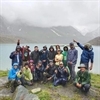

Small Group Size
Our batch sizes are capped at 15 for smaller treks with the trek leader and trekker ratio of 1:8. This ratio, in our years of experience, has proven to deliver the best trekking experience for individuals as well as groups. Capping the size of the group ensures individual attention to each trekker so that no signs of distress or need during the trek go unnoticed. It also helps to form a more cohesive cohort with better group energy which helps define the rhythm and pace of days on the trek. As you go higher up on the BRS scale, since the stakes are higher, expeditions have an even smaller group size with the ratio of expedition leader to climber set at 1:2.
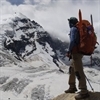

Qualified Trek Leaders
We follow a rigorous regime of hiring and training our experts in the field. Each trek leader is a certified mountaineer with years of experience in the field. In addition to their qualification, they also go through practical and situational training to tackle any and all kinds of sudden conditions that may present themselves on the ground. Being unpredictable is the core nature of the mountains but being ready for any circumstance as best as possible is a controllable asset that we try to nurture. Our field experts are also trained in basic medicine and first-aid response. Watch: Forerunners - The Making of A Trek Leader At Bikat Adventures
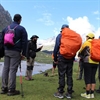

Guided Progression
Since Bikat Adventures is a learning-based organization, we help you climb up the ladder of difficulty within the sphere of outdoor adventure systematically. Our on-ground training modules are designed to handhold you through the upskilling process so that you are ready to take on bigger challenges.
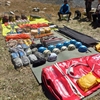

Equipment Quality and Check
All the gear used on our treks and expeditions is tried and tested, maintained for good quality, and is overall top-notch in quality and condition. We are continually looking to obtain the best of everything there is in the market so as to ensure optimum safety.
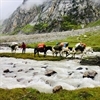

Support Systems
Along with the staff you see on-ground, we have a team of superheroes working in the background to give you the best experience possible. Our background team also comprises local staff from each area who know the region best. Having local support helps with studying the area, pre-planning, execution, and in receiving timely support in case of emergencies in these remote locations.
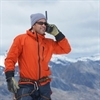

Communication
Our on-field staff is in constant contact with our teams based in primary locations so as to eliminate any avoidable delay in reaching additional help and support when required. We try to use the best tools for communication available, including satellite phones, in regions where they are not restricted.
What our customers Say
Cancellation Policy
Cash refund
Cancellations up to 60 days prior to departure date
Between 60 days upto 30 days prior to departure date
Between 30 days upto 10 days prior to departure date
Less than 10 days prior to departure date
Voucher refund
Cancellations up to 30 days prior to departure date
Between 30 days upto 15 days prior to departure date
Between 15 days upto 10 days prior to departure date
Less 10 days prior to departure date
- Cash refund is applicable only in case of bookings made without using any promotional offer code or Cancellation Vouchers or Discounts
- This is only a brief of cancellation terms. For finer details please refer Detailed Cancellation Policy.
Blog Posts
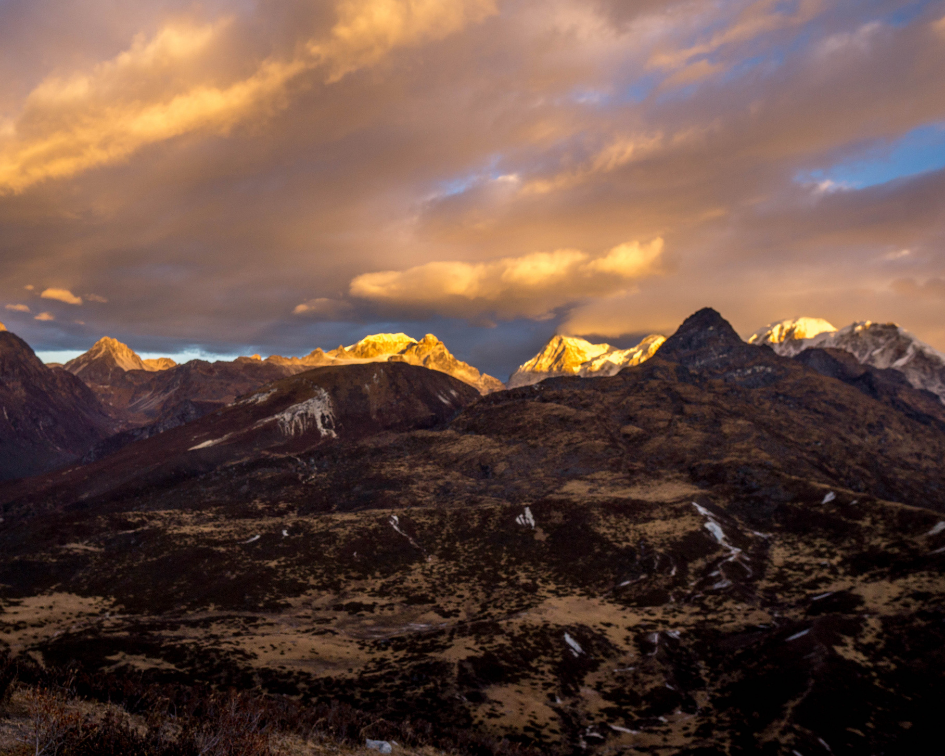
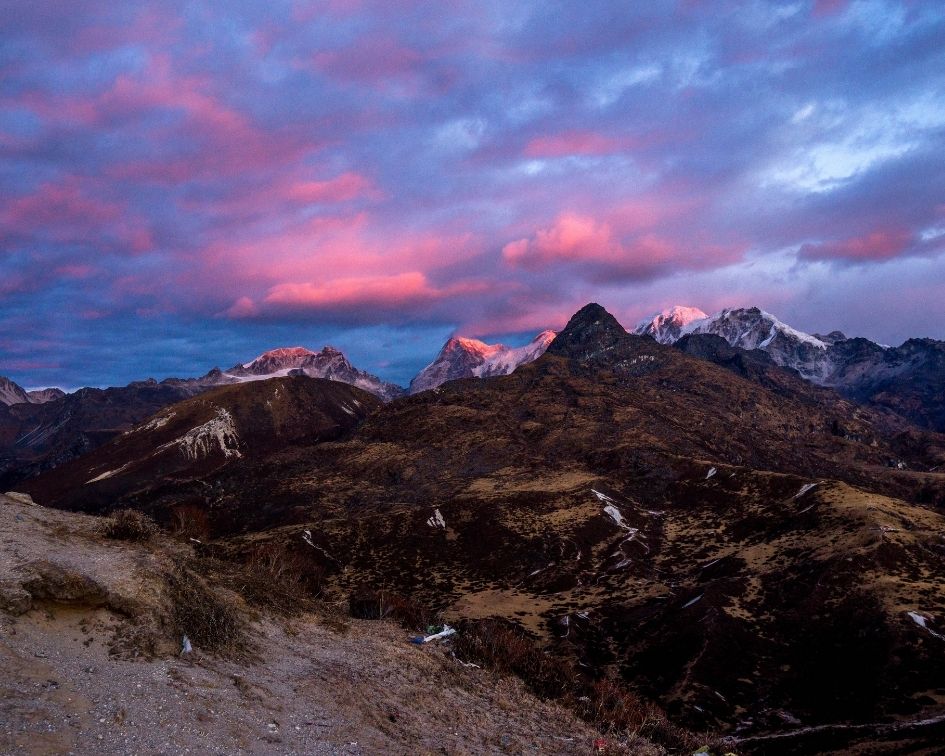
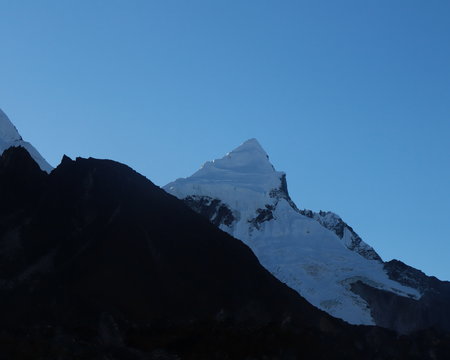
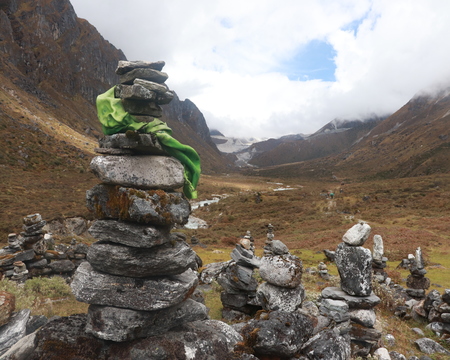
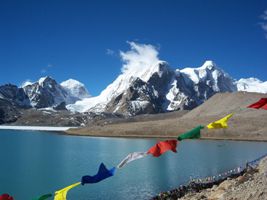
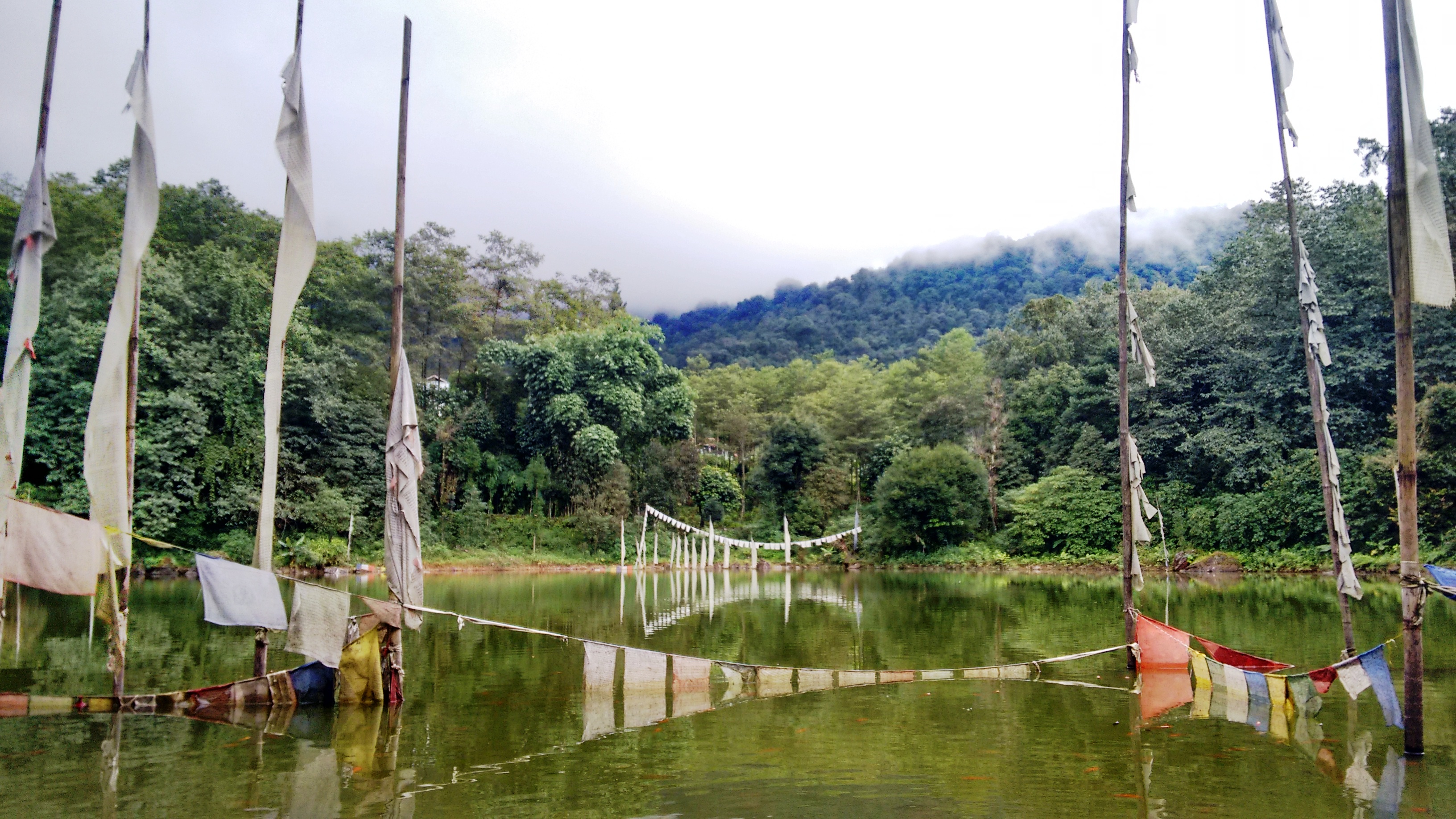
Similar Adventures
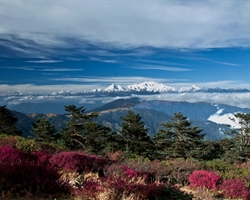
Sandakphu Trek
A trail that run right in the heart of 4 of the 5 tallest mountains in the world
West Bengal
7 Days
BRS 2
3627 m
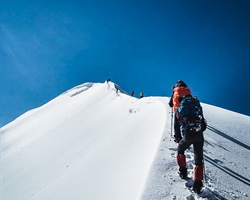
Bali Pass Trek
A badass trek for seasoned trekkers
Uttarakhand
9 Days
BRS 5
4950 m
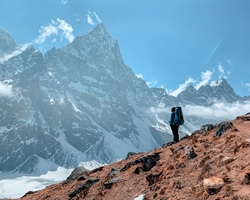
Everest Base Camp Trek
Walk where the Legends walked.
Nepal
14 Days
BRS 5
5545 m
